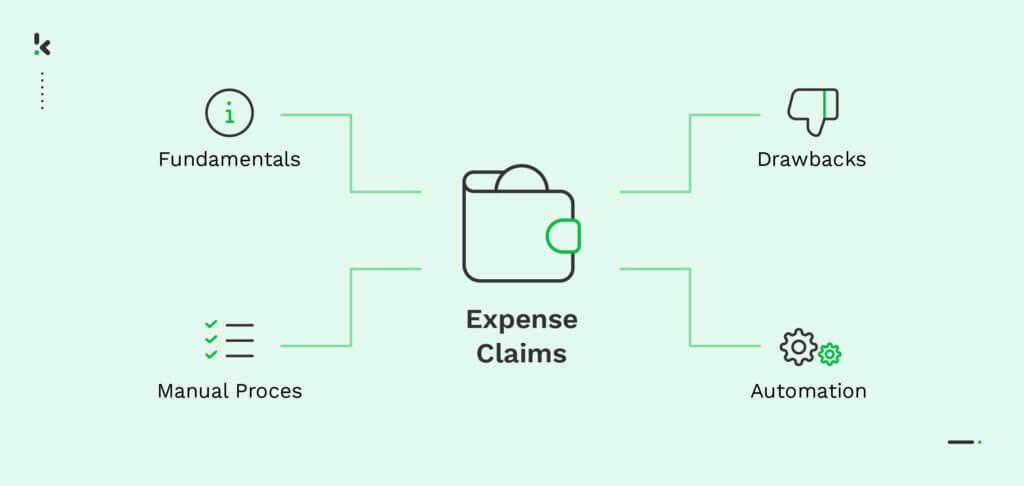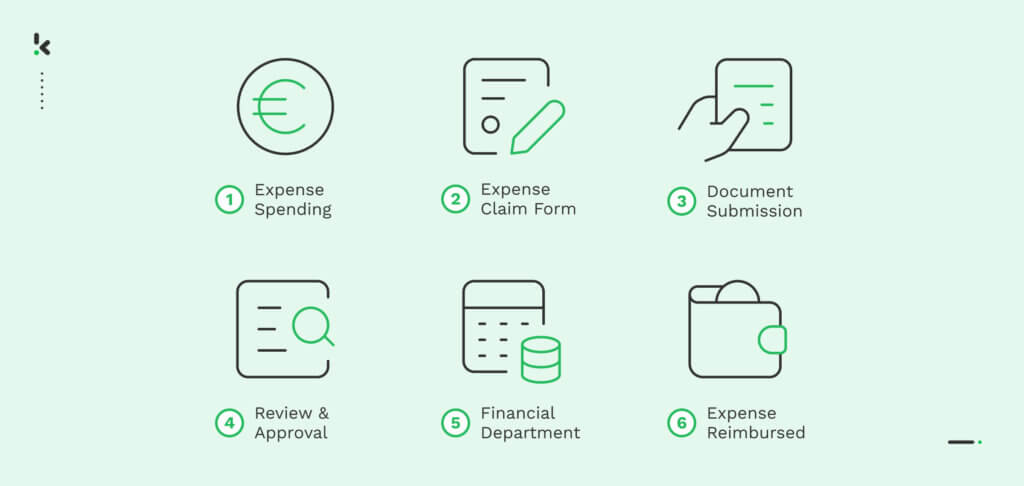

Despite the developments in technology, many companies still use traditional ways to process their expense claims. These methods often lead to flaws. Based on findings by the Global Payroll Association (GPA), 20% of employees confess to occasionally submitting incorrect claims, while 10% consistently do so.
In this blog, we will explore the traditional process of expense claims, shed light on its drawbacks, and introduce a solution that simplifies the process and minimizes errors.
Let’s dive in.
What are expense claims?
Expense claims are reimbursement requests filed by employees for out-of-pocket expenses incurred during business activities, covering travel, meals, accommodation, transportation, office supplies, and other necessary expenditures.
To submit expense claims employees need to provide detailed information about each reimbursable expense. This includes, the data of the expense, a description of the purchased items, the amount spent and a proof of purchase.
When it comes to manual expense claim processes, keeping your supporting documents safe is key. In the following section, we will provide a detailed overview of the manual expense claim process, giving you a clear understanding of how it works.
The manual expense claim process
The manual process of filing expense claims consists of six sequential steps. By following these steps, organizations can ensure a structured and organized approach to managing employee expenses.
- Expense Spending: Employees incur business-related expenses and retain the receipts or other supporting documentation.
- Expense Claim Form: Employees fill out a paper, providing details for each expense, such as the date, description, and amount.
- Documentation Submission: Employees attach the supporting documentation, such as receipts or invoices, to the expense claim form.
- Review and Approval: The expense claim and supporting documentation are submitted to the appropriate department or supervisor for review and approval. This step ensures that the expenses comply with the organization’s expense policies and guidelines.
- Finance Department Processing: Approved expense claims are forwarded to the finance department for further processing. This includes verification, reimbursement calculation, and allocation to the appropriate accounts.
- Reimbursement: Once the expense claim is verified and processed, the finance department initiates the reimbursement to the employee, either through direct deposit or by issuing a reimbursement check.


Challenges with manual expense claims
Manual processing of expense claims remains prevalent in many companies, despite its downsides. In the following sections, we will highlight the most common downsides of manual processing.
Time consuming
Manual expense claims require employees to spend valuable time collecting, organizing, and filling out forms, diverting their focus from productive work.
Delays in processing and reimbursement
Multiple manual steps and interventions in the process lead to longer payout times, causing frustration for employees waiting for reimbursement.
Prone to errors
Manual data entry and handling of paperwork increase the risk of mistakes, resulting in complications, rework, and further delays.
Risk of fraud
Manual processes create opportunities for document fraud, as robust checks and validation mechanisms are lacking, leading to financial losses for the organization.
Limited Visibility and Tracking
Manual processes make it difficult for employees and the finance department to have real-time visibility into the status of claims, impacting compliance, monitoring, and reporting efficiency.
To overcome these challenges, many organizations are shifting towards digital solutions and automated expense management through spend management software that fits their organization best. In the next section, we will explain in more detail what data automation can do for your expense claim process.
Why you should automate your expense claim procedure
Automating the expense claims process brings a host of benefits, enhancing operational efficiency and streamlining workflows. Clients can reap several key benefits by embracing automation, such as:
- Time Savings: Automation reduces the time spent on manual tasks, such as data entry and paperwork, allowing employees to focus on core responsibilities.
- Faster Reimbursements: With automated processes, expense claims can be reviewed, approved, and processed more quickly, leading to faster expense reimbursement for employees.
- Increased Productivity: By reducing administrative burdens, automation frees up time and resources for employees to focus on more strategic tasks, enhancing overall productivity.
- Improved Accuracy: Automation minimizes human errors associated with manual data entry, ensuring accurate expense calculations and reducing the need for rework.
- Enhanced Policy Compliance: Automated systems can enforce policy rules, flagging potential policy violations and ensuring adherence to company expense guidelines.
- Real-Time Visibility: Digital solutions provide real-time visibility into the status of expense claims, enabling employees and finance teams to track and monitor progress easily.
- Integration with Accounting & ERP Systems: Automated expense management systems can seamlessly integrate with accounting & ERP software, simplifying the reconciliation process and ensuring accurate financial records.
- Audit Trail and Compliance: Automated systems maintain a digital audit trail, providing transparency, accountability, and supporting compliance requirements.
By embracing automation, organizations can streamline expense management, reduce processing time, enhance accuracy, and create a more efficient and transparent expense claim process.
Once you understand the challenges of manual expense claim processing and recognize the potential of automation, you’re likely eager to harness its power. In the following section, we will introduce a digital solution that can swiftly streamline your expense claim process.
How Klippa SpendControl automates your expense claim process
To bear fruits from all the benefits that have been mentioned before, digital expense management software is what can make the difference. Klippa SpendControl is an all-in-one expense management solution that allows you to streamline your entire expense claim workflow from beginning to end.
The solution offers a fully digital and automated process for submitting, authorizing, and processing expenses through its web and mobile application. It also features OCR technology that eliminates the need for manual receipt entry, minimizes human error, and improves employee productivity significantly.
Klippa SpendControl is equipped with a range of full-fledged features and a user-friendly design to make your expense claim process feel like a breeze. It offers several benefits that enhance the efficiency and effectiveness of your workflows, including:
- Save time: Experience automated data entry, powered by Klippa’s proprietary OCR technology, eliminating manual input and saving valuable time.
- Proper documentation: Never lose receipts again in Klippa’s digital workspace where you have up to 10 years access to your files.
- Improve employee satisfaction: Reduce reimbursement time with streamlined processes, enhancing employee satisfaction and morale.
- Minimize fraud: Benefit from fraud prevention measures integrated into Klippa SpendControl, safeguarding your organization from fraudulent expense claims.
- Maximize control and compliance: Leverage intelligent controls and digital audit trails to maintain full control over expenses and ensure compliance with policies and regulations.
- Seamless integration: Synchronize Klippa SpendControl with your preferred accounting or ERP system, enabling smooth data transfer and efficient financial reconciliation.
Unlock the full potential of Klippa SpendControl and improve your expense claim processes like never before. Empower your organization with a comprehensive suite of features and endless possibilities.
Don’t hesitate to contact one of our experts or book a free demo. Our team is excited to showcase how Klippa SpendControl can benefit your business and streamline your expense claim processes.